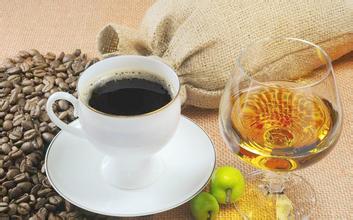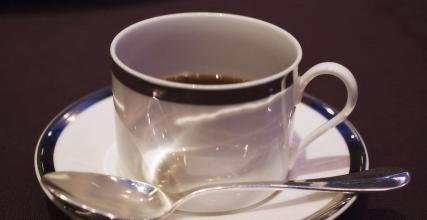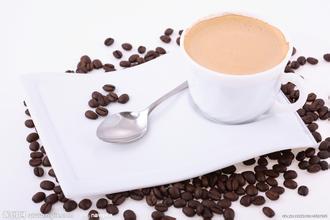Flavor and taste of Puerto Rico Coffee producing area characteristics of Larez Yaoke Coffee
In ancient China, Shennong tasted all kinds of herbs and recorded them one by one, so that later generations could have a systematic understanding of many plants. There is no such person as Shennong in the western world, let alone any written record, so there are different legends about the origin of coffee. Among them, the most common and popular story is the story of the shepherd.
In ancient times, Arabs first dried and boiled coffee beans and drank the juice as stomach medicine, thinking that it could help digestion. Later, it was found that coffee also had a refreshing effect, and because Muslims strictly prohibited drinking, coffee was used instead of alcoholic beverages as a refreshing drink. After the 15th century, Muslims who made pilgrimages to the holy land of Mecca brought coffee back to their places of residence, and coffee gradually spread to Egypt, Syria, Iran, Turkey and other countries. The entry of coffee into Europe should be attributed to the Ottoman Empire of Turkey at that time. Because the coffee-loving Ottoman army marched westward to Europe and was stationed there for several years, when the army finally withdrew, it left a large number of supplies, including coffee beans. People in Vienna and Paris were able to develop European coffee culture based on these coffee beans and the cooking experience gained from the Turks. The war was originally occupied and destroyed, but it unexpectedly brought about cultural exchange and even integration, which was unexpected by the rulers.
Westerners are familiar with coffee with a history of three hundred years, but in the East, coffee has been widely used as a drink in all walks of life in the East. Coffee appeared earliest and most accurately in the 8th century BC, but as early as Homer's works and in many ancient Arab legends, a magical, dark, bitter, and highly stimulating drink has been recorded. Around the 10th century AD, Avicenna,980-1037 was using coffee as a medicine to treat diseases. There is also a strange story from the 15th century in which it is said that a Yemeni shepherd saw a group of goats picking reddish berries from a bush. Soon the goats became restless and excited. The shepherd reported this to a monk, who cooked some berries. Then extract a bitter, strong drink that can drive away drowsiness and drowsiness, and then smell it carefully. The coffee exudes the spicy aroma of caramel and the aroma of lemon and vanilla, gently taking a sip, first a mellow taste similar to chocolate, then a delicate fragrance, a slight fever in the throat seems to be warm, and the aroma of the empty cup has not gone away for a long time. This kind of coffee does not need to add milk and sugar, the original taste is enough.
Yaocote's choice of coffee, which is grown only on three farms in the southwest of the island, is fragrant and has a long aftertaste. This kind of coffee is very expensive and its flavor is comparable to that of any other coffee variety in the world. In the Yauco area, the coffee is owned and operated by local planters. The mountain climate here is mild, the plants have a long mature period (from October to February of the following year), and the soil is of high quality clay. Some old varieties of Arabica coffee beans are grown here, and although the yield is lower than that of other varieties, they are generally of high quality. People here have been using an ecological and intensive planting method, using only some low-toxic fertilizers and chemicals, and taking mixed crop planting measures to make the soil more fertile. When it comes time to pick coffee beans, people walk back and forth between coffee trees, picking only fully ripe coffee beans, and then wash them in a roller device for 48 hours. Today, Puerto Rican gourmet coffee has been exported to the United States, France and Japan.
Coffee in this country is generally carefully planted, with pure taste, aroma and heavy granules, among which the best is among the world's famous brands. The best coffee is Yaoke Yauco Selecto, which means "Selecto". Grand Lares Yauco is produced in the southwest of the island, while Lars coffee is produced in the south-central part of the island. Yaocote, a gourmet coffee from Puerto Rico, is grown only on three farms in the southwest of the island. It has a strong flavor and a long aftertaste. This kind of coffee is very expensive and its flavor is comparable to that of any other coffee variety in the world. In the Yauco area, the coffee is owned and operated by local planters. The mountain climate here is mild, the plants have a long mature period (from October to February), and the soil is of high quality clay.
Some old varieties of Arabica coffee beans are grown here, although the yield is lower than other varieties, but generally of high quality. People here have been using an ecological and intensive planting method, using only some low-toxic fertilizers and chemicals, and taking mixed crop planting measures to make the soil more fertile. When it comes time to pick coffee beans, people walk back and forth between coffee trees, picking only fully ripe coffee beans, and then wash them in a roller device for 48 hours. Yaocote chooses coffee beans to be preserved in shells before they are shipped and will not be peeled off until the order is shipped to ensure the best freshness of the coffee. Relevant U.S. government staff, such as FDA and USEA, will also be present when the goods are submitted, and they work to monitor producers' compliance with federal regulations. There are also some staff from the local evaluation board, who take 1 bag out of every 50 bags as samples and use international gauges to evaluate their quality.
With the cheerful music of the Caribbean, sitting under the open-air teahouse and tasting the amorous feelings of Puerto Rico, the naughty sun photocopied the trees on your face from time to time. As soon as I closed my eyes, I felt as if I had instantly arrived at the beach of the Caribbean. It is reported that Puerto Rican coffee has been the first choice of the Vatican and European royals since the second half of the 19th century. At the same time, it was selected by President Roosevelt as the designated coffee for the White House state dinner. According to the restaurant barista, Puerto Rico coffee matures from September to December every year, is picked 100% by hand, is produced and processed in accordance with the most advanced and stringent quality control in the United States, and stored in parchment. Every piece of land where coffee is produced has an ID card, and every year the state finances research on integrated pest management programs, adopts non-chemical control plans, and legislates to strictly prohibit the reclamation of coffee planting land by destroying tropical rain forests. Take a deep breath, and the aroma of coffee reaches the chest through the throat. In recent years, the number of coffee enthusiasts has increased sharply. Since coffee landed in Taiwan in 1884, coffee has been developed in China for more than 100 years. However, little is known about Puerto Rico coffee, just because its foreign market used to be mostly in Japan, where the Japanese market was depressed after the March 11 earthquake, and Puerto Rico coffee suppliers found another way, and it just entered the Chinese view and lazily leaned sideways. Enjoy the scene of the coffee maker being adept at brewing coffee. The special coffee machine comes from Japan, and the coffee beans are roasted in advance on the day they are ready to be ground. After being ground into powder, they are put into 10g and 15g at a time. After the water in the siphon pot boils, it is squeezed from the bottom of the bottle due to the principle of pressure, fuses with coffee bean powder, and the room is full of fragrance after 1 minute or 2 minutes.

Important Notice :
前街咖啡 FrontStreet Coffee has moved to new addredd:
FrontStreet Coffee Address: 315,Donghua East Road,GuangZhou
Tel:020 38364473
- Prev

Altitude: characteristics of Sidamo Shakiso boutique coffee bean flavor manor estate about 2000 meters above sea level
Sidamo is a famous boutique coffee producing area in Ethiopia, and the well-known Yegashifi coffee beans are produced in the town of Yegashefi. This batch of coffee from Sidamo Deri Kochowa, in addition to having the same clean citrus aroma as Yega Chuefei, it also has frank floral and spicy aromas, good sweetness and jasmine-like aromas. Cold cup exhibition
- Next

Introduction to the Flavor and Taste characteristics of Puerto Rico Coffee Manor
Medium roasted-coffee beans show an elegant brown color. This method of baking is also called city roast. Medium roasting can not only preserve the original flavor of coffee beans, but also moderately release aroma, so the blue mountains of Jamaica, Colombia, Brazil and other individual coffee, more choose this roasting method. At 20 minutes, the oil begins to surface, and the beans are burned to a bright dark brown, called full-city.
Related
- Detailed explanation of Jadeite planting Land in Panamanian Jadeite Manor introduction to the grading system of Jadeite competitive bidding, Red bid, Green bid and Rose Summer
- Story of Coffee planting in Brenka region of Costa Rica Stonehenge Manor anaerobic heavy honey treatment of flavor mouth
- What's on the barrel of Blue Mountain Coffee beans?
- Can American coffee also pull flowers? How to use hot American style to pull out a good-looking pattern?
- Can you make a cold extract with coffee beans? What is the right proportion for cold-extracted coffee formula?
- Indonesian PWN Gold Mandrine Coffee Origin Features Flavor How to Chong? Mandolin coffee is American.
- A brief introduction to the flavor characteristics of Brazilian yellow bourbon coffee beans
- What is the effect of different water quality on the flavor of cold-extracted coffee? What kind of water is best for brewing coffee?
- Why do you think of Rose Summer whenever you mention Panamanian coffee?
- Introduction to the characteristics of authentic blue mountain coffee bean producing areas? What is the CIB Coffee Authority in Jamaica?

